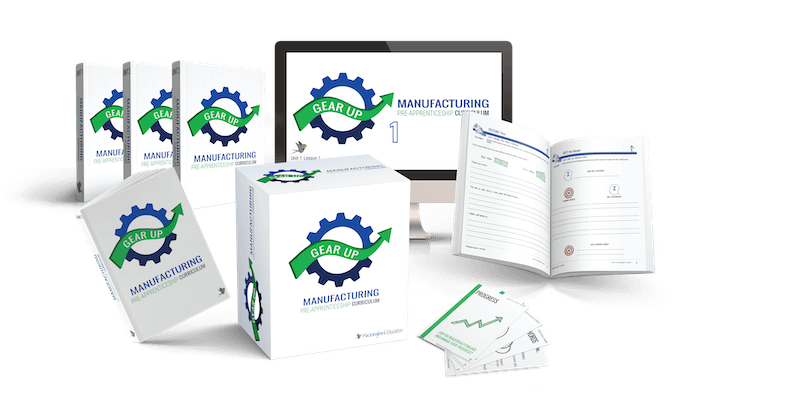UNIT 1
ABOUT THE UNIT
The manufacturing industry is fast-growing with competitive salaries and a rising need for skilled workers. Future jobs in manufacturing will result from those talented workers who have the skills to maintain, repair, and evaluate the efficacy of new technologies and mechanisms used in the production of goods.
This unit provides an introduction to manufacturing as an industry. Learners will explore job growth and potential in this field and engage specifically with the competencies and duties required of an Industrial Mechanical Technician. Mathematical competencies associated with a career in manufacturing include addition and subtraction of fractions, decimals, and whole numbers. Workplace scenarios enable practice with these math skills and exposure to the workplace value: employability.
Lesson 1: The Manufacturing Industry: Job Growth and Potential
Lesson 2: Exploring a Career in Manufacturing
- DEFINE Industrial Mechanical Technician
- ANALYZE when to use a graphical display for information
- CONSTRUCT a claim using evidence from a graph
- EXPLAIN why mathematical precision is important in manufacturing
- DESCRIBE a digit’s place value
- RECOGNIZE when to regroup in order to add and subtract large whole numbers and decimals
- ADD and SUBTRACT whole numbers and
- USE charts to sort and display information
- INTERPRET visual graphs to solve real-world problems in a manufacturing context
- ADD and SUBTRACT large whole numbers & decimals
- USE place value knowledge to
- COMPARE large whole numbers & decimals
- INTERPRET data to solve real world problems in a manufacturing context
- EXHIBIT employability values in thoughts and actions
- SOLVE problems with precision and efficiency
- ROLE PLAY scenarios in a manufacturing context
- EXHIBIT employability values in thoughts and actions
- SOLVE problems with precision and efficiency
- ROLE PLAY scenarios in a manufacturing context
Learners are introduced to the job of Industrial Mechanical Technician.
Learners are introduced to fractions in the context of employability.
Learners practice adding & subtracting like fractions in the context of employability.
Learners practice adding & subtracting unlike fractions in the context of job skills.
Learners practice adding & subtracting improper fractions in the context of job skills.
Learners practice adding & subtracting mixed fractions in the context of job skills.
Learners participate in a review of adding & subtracting different types of fractions.
Learners create a TRY Goal.
Learners participate in an opening ritual.
Learners are introduced to place value in the context of large whole numbers.
Learners are introduced to place value in the context of decimal numbers.
Learners use place value knowledge to add large whole numbers.
Learners use place value knowledge to subtract large whole numbers.
Learners use place value knowledge to add and subtract decimal numbers.
Learners participate in a closing ritual.
Learners engage in additional practice (optional).
Learners review I CAN statements (optional).


